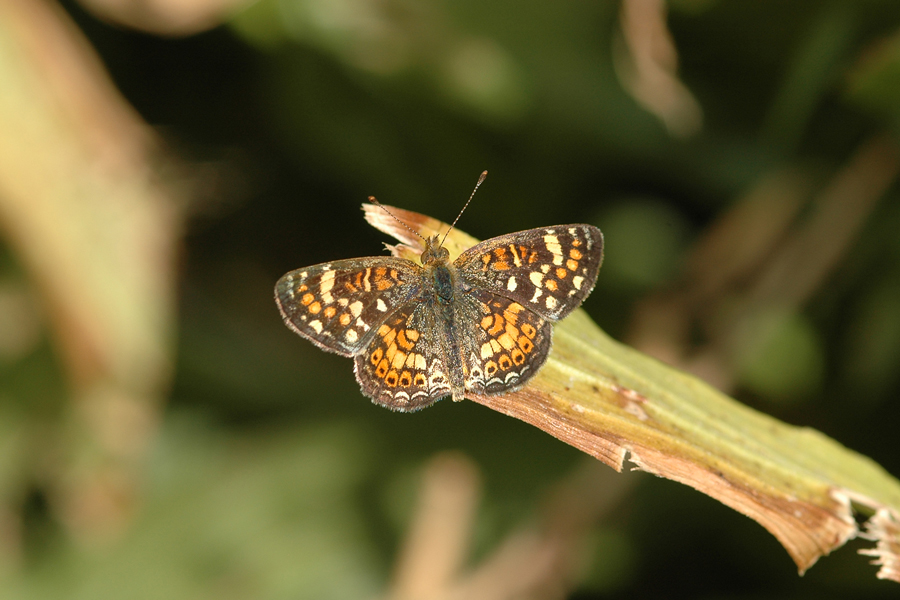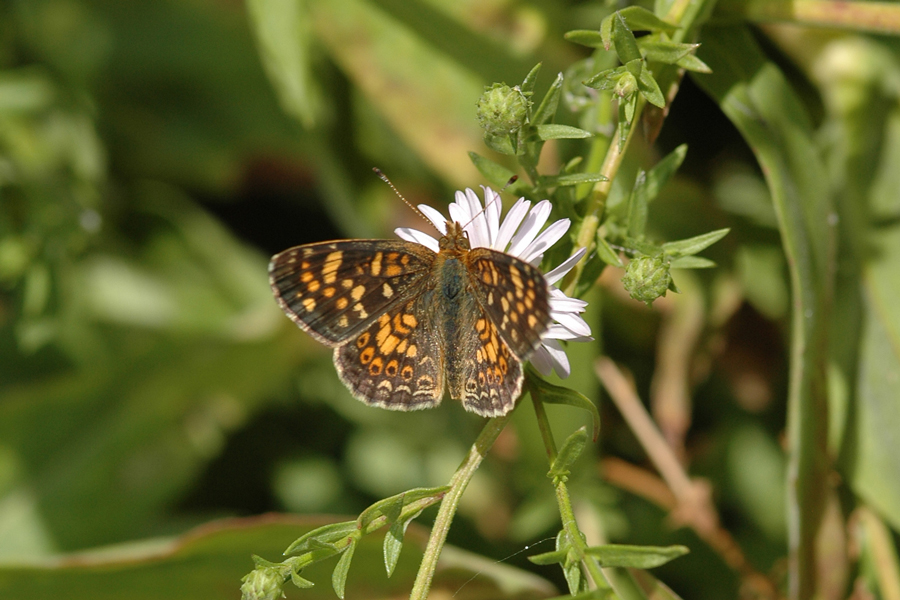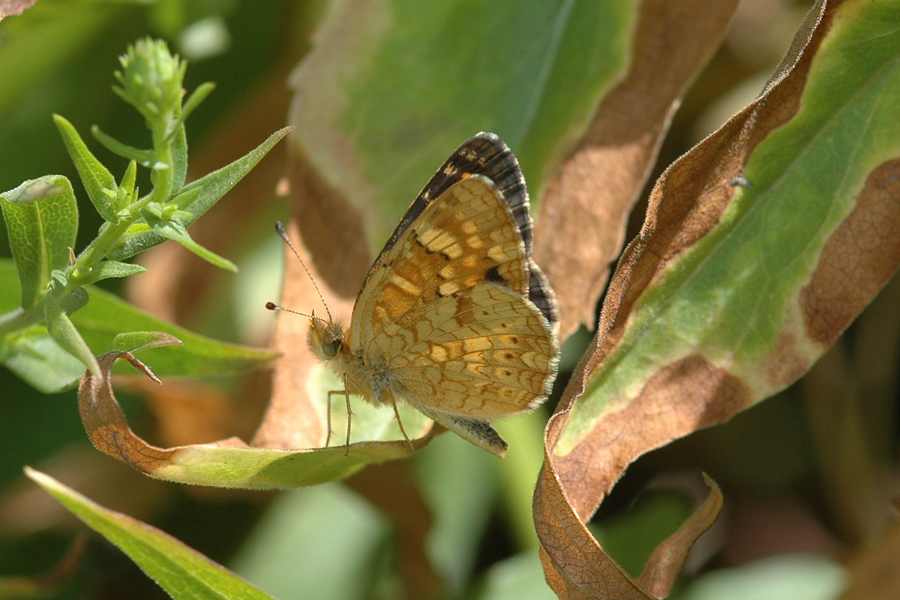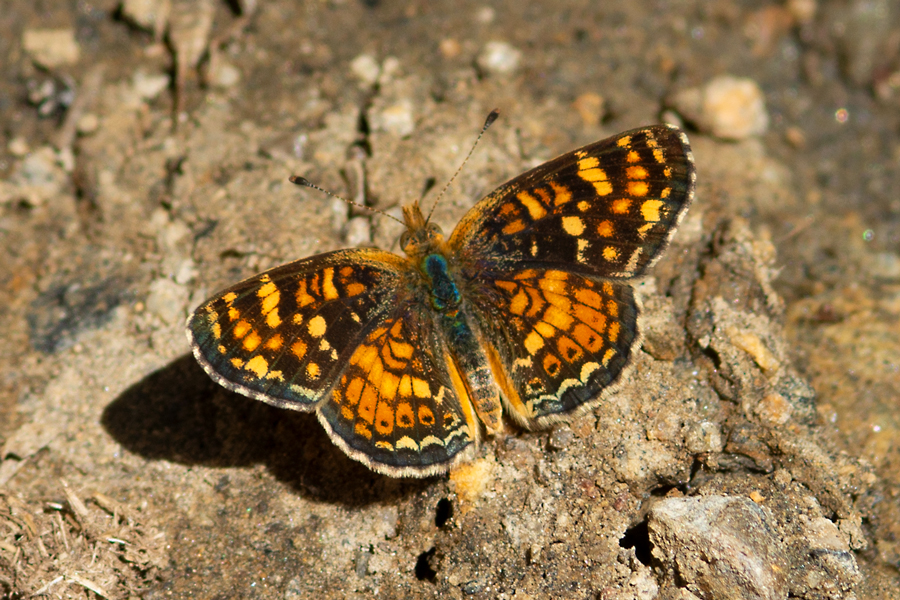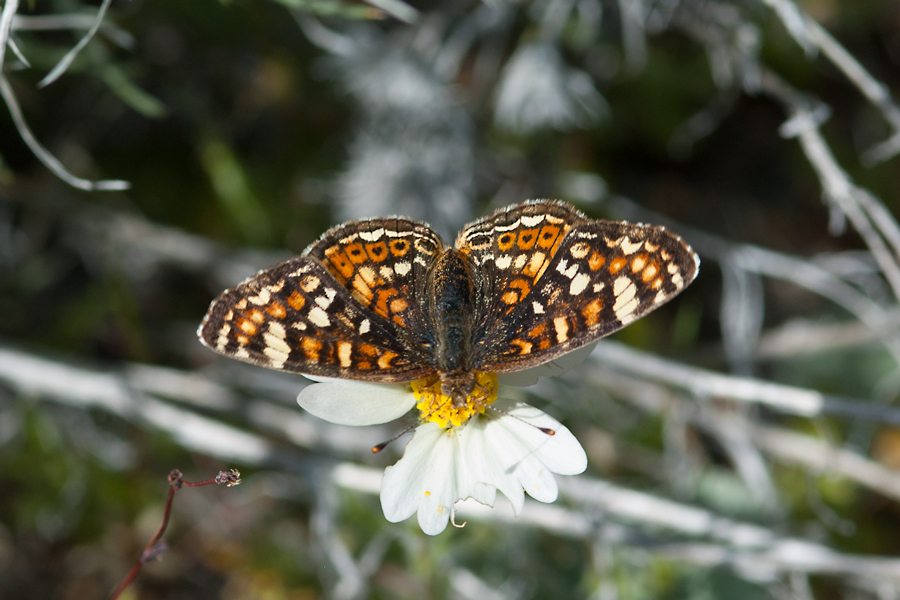Phyciodes pulchella pulchella
Field Crescent
This little butterfly is somewhat similar to the lighter, less boldly-marked Phyciodes mylitta, which is far more common in southern California than pulchella. If it's flying with palla, the dots along the hind wing distinguish it easily. Females show more contrast than males from dark brown to nearly white, as the photos below show. The females in particular make for quite a handsome butterfly, especially when freshly emerged.
I've found them up San Gabriel Canyon at a turn in the highway where its host - Aster lanceolatus var. hesperius - grows, and it can be easily found where Alder Creek (6800') meets the Sherman Pass Road (Ken Davenport lists the latter pulchella as a "southern Sierra Nevada segregate"). At that location, it may be flying with mylitta in additional to palla - three sexually dimorphic members of the subfamily Melitaeinae possibly on the same flowers.
There has been some confusion over the name of this butterfly. Behr's Melitaea campestris and Melitaea praetensis were, in fact, a female and male - respectively - of what is now known as the sexually dimorphic Phyciodes pulchella (sometimes rendered in the masculine spelling, pulchellus). In the Systematics book (pp.99-100), Emmel, Emmel, and Mattoon restricted the Type Locality to San Francisco and designated a Neotype, which is at the California Academy of Sciences in San Francisco.
Pulchella can have from one to three broods, depending on elevation and conditions.
